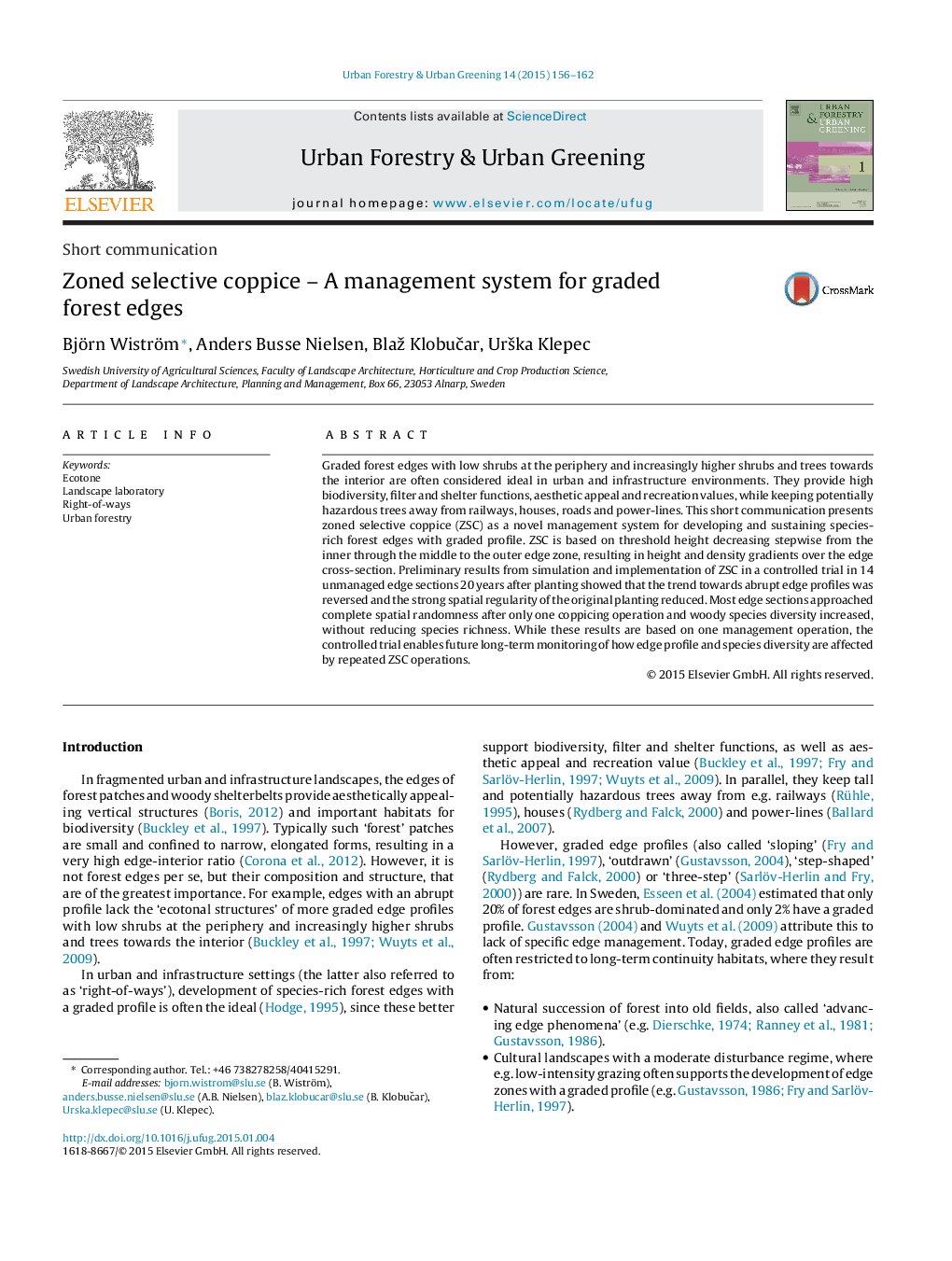| Article ID | Journal | Published Year | Pages | File Type |
|---|---|---|---|---|
| 10252244 | Urban Forestry & Urban Greening | 2015 | 7 Pages |
Abstract
Graded forest edges with low shrubs at the periphery and increasingly higher shrubs and trees towards the interior are often considered ideal in urban and infrastructure environments. They provide high biodiversity, filter and shelter functions, aesthetic appeal and recreation values, while keeping potentially hazardous trees away from railways, houses, roads and power-lines. This short communication presents zoned selective coppice (ZSC) as a novel management system for developing and sustaining species-rich forest edges with graded profile. ZSC is based on threshold height decreasing stepwise from the inner through the middle to the outer edge zone, resulting in height and density gradients over the edge cross-section. Preliminary results from simulation and implementation of ZSC in a controlled trial in 14 unmanaged edge sections 20 years after planting showed that the trend towards abrupt edge profiles was reversed and the strong spatial regularity of the original planting reduced. Most edge sections approached complete spatial randomness after only one coppicing operation and woody species diversity increased, without reducing species richness. While these results are based on one management operation, the controlled trial enables future long-term monitoring of how edge profile and species diversity are affected by repeated ZSC operations.
Keywords
Related Topics
Life Sciences
Agricultural and Biological Sciences
Forestry
Authors
Björn Wiström, Anders Busse Nielsen, Blaž KlobuÄar, UrÅ¡ka Klepec,
